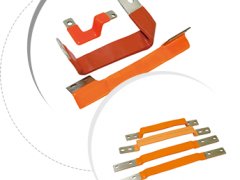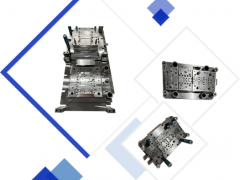A power connector is an electronic device used to connect the wiring between a power source and an electrical device. Power connectors are commonly used to start and shut down electrical equipment, control circuits, and more. The most common types include AC connectors, DC connectors, cord connectors, blade connectors, plug and socket connectors, insulation piercing connectors, etc. Of these, light-duty connectors can carry low currents up to 250V, but be aware of contact resistance and the effects of external contaminants; medium-duty connectors can carry higher level currents up to 1,000V, but need to be aware of contact materials and electrical wear issues; and heavy-duty connectors carry high level currents in the range of hundreds of kilovolts (kV), and are suitable for large-scale power distribution applications and power management and protection systems. Power connectors must avoid a wide range of electrocution risks and care must be taken when handling high voltage. The principle of operation of power connectors involves both power transmission and signal transmission. This makes power connectors indispensable in electronics, allowing current to pass through itself to the specified device to supply power.
Power connectors are used in a wide range of application scenarios, whether in electronic equipment, automobiles, home appliances, communication equipment, medical equipment or industrial equipment. For example, in electronic equipment, power connectors are used to connect external power to the equipment so that the equipment can operate normally. In automobiles, power connectors are used to transfer power from batteries or generators to motors, air conditioners, lighting and other equipment. In home appliances, power connectors are used to connect power to devices such as televisions, refrigerators, washing machines, etc. In communication equipment, power connectors are used to connect power to devices such as base stations, routers, switches, and so on. In medical equipment, power connectors are used to connect power to devices such as monitors, electrocardiographs, ventilators and so on. In industrial equipment, power connectors are used to connect power to motors, pumps, compressors and other equipment.
The future development trend of power connectors mainly includes the following aspects:
1. miniaturization: with the continuous miniaturization of electronic products, power connectors also need to continue to miniaturize.
2. high-speed: With the continuous high-speed electronic products, power connectors also need to continue to high-speed. 3.
3. high reliability: with the continuous high reliability of electronic products, power connectors also need to continue to high reliability.
4. high security: with the continuous high security of electronic products, power connectors also need to continue high security.
5. Intelligent: With the continuous intelligence of electronic products, power connectors also need to be continuously intelligent.
In short, the power connector is a very important electronic device, which can be connected to the power supply and electrical equipment between the lines. With the continuous development of electronic technology, the types and performance of power connectors are also improving. In the future, the development trend of power connectors will mainly include miniaturization, high-speed, high reliability, high security and intelligence.


